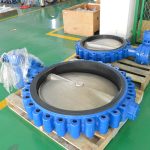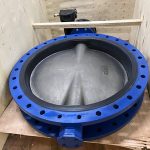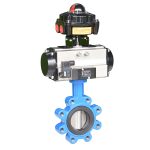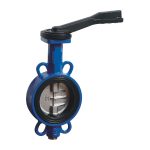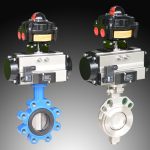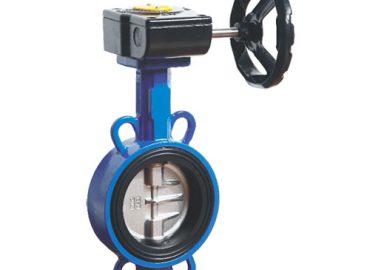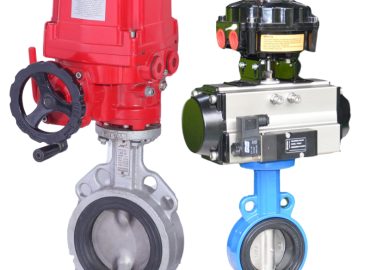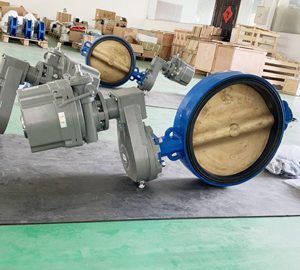Wafer lug type butterfly valve may not be the first thing that comes to mind when thinking about water treatment and desalination plants, yet their role is indispensable. These robust and efficient valves are integral to the operation of these facilities, ensuring the smooth and safe flow of water through intricate systems. Their unique design and functionality make them perfectly suited to handle the rigorous demands of water treatment and desalination processes. This blog post aims to shed light on the crucial role of wafer lug type butterfly valve in these settings, highlighting their importance and the ways they contribute to the overall efficiency and effectiveness of water management systems.
Introduction
Wafer lug type butterfly valve play a crucial role in the functionality and efficiency of water treatment and desalination plants. These valves, characterized by their compact design and efficient operation, are tasked with controlling and regulating the flow of water through various processes within these plants. Water treatment involves numerous stages, each requiring precise control over the flow rate and pressure of the water. This is where the wafer lug type butterfly valve come into play. Their unique design allows them to manage high flow rates while maintaining a tight seal, preventing backflow and ensuring consistent performance. Similarly, in desalination plants, these valves are used in high-pressure environments to regulate the flow of seawater through the desalination process. They are constructed using materials that can withstand the corrosive properties of seawater, ensuring longevity and reliable performance. Moreover, their maintenance-friendly design reduces downtime and increases overall plant efficiency. In essence, wafer lug type butterfly valve are silent workhorses, contributing significantly to the successful operation of water treatment and desalination plants. Their role, while not always visible to the naked eye, is vital in ensuring we have access to clean, safe water.
Brief explanation of what wafer lug type butterfly valve are and their function.
Wafer lug type butterfly valve are a specific kind of flow control device used in various industries, including water treatment and desalination plants. They consist of a disc mounted on a rotating shaft, housed within a body that fits between two pipe flanges. The distinctive feature of these valves is the ‘lug’ – protruding lips with bolt holes that align with those on the pipe flanges, allowing for easy mounting and dismounting without disturbing the piping system. When the valve is open, the disc rotates to align with the fluid flow, offering minimal resistance. When closed, the disc rotates to obstruct the flow path, providing a tight seal. These valves are known for their durability, ease of operation, and ability to handle a wide range of pressures and temperatures, making them invaluable in systems that require reliable flow regulation.
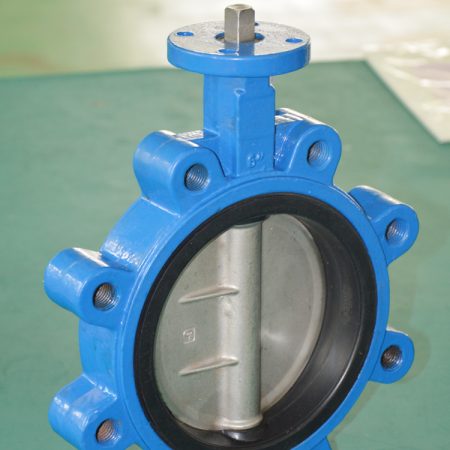
Overview of the importance of water treatment and desalination plants.
Water treatment and desalination plants play a vital role in safeguarding public health and ensuring the sustainability of our water resources. In a world where fresh, clean water is not always readily available, these facilities provide an essential service. Water treatment plants process raw, often contaminated water from various sources like rivers, lakes, or wells, removing harmful substances and pathogens to make it safe for consumption and use. On the other hand, desalination plants are crucial in areas where freshwater resources are scarce, such as arid regions or coastal cities. These facilities convert saline seawater into potable water through processes like reverse osmosis, providing a reliable water supply where it would otherwise be lacking. Both types of plants are critical in maintaining the water cycle, supporting agriculture, industry, and daily human life, making their operation and efficiency a matter of global importance.
Understanding Wafer Lug Type Butterfly Valve
Wafer lug type butterfly valve are a unique type of flow control device that serve a critical function in many industrial systems. They are characterized by their compact design, which includes a disc mounted on a rotating shaft within a cylindrical body. The ‘wafer’ refers to the thin, flat configuration of the valve, designed to fit snugly between two pipe flanges in a piping system. The ‘lug’ aspect of the valve comes from the protruding lips or ‘lugs’ on the outer edge of the valve, which have bolt holes that align with the pipe flanges. This allows for the valve to be securely mounted, and also enables it to be removed without having to disassemble the entire piping system, making maintenance and replacement tasks much easier. The function of these valves centers on the rotating disc inside. When the valve is open, the disc is turned to align with the fluid flow, allowing it to pass through with minimal resistance. Conversely, when the valve is closed, the disc is rotated to block the flow path, creating a tight seal. These valves are renowned for their durability and versatility, capable of handling a wide range of pressures and temperatures. They are commonly used in water treatment and desalination plants, HVAC systems, and various other industrial applications where reliable and efficient flow regulation is paramount.
Detailed description of wafer lug type butterfly valve.
Wafer lug valve are a specialized form of quarter-turn valves that are widely recognized for their compact design and versatile functionality. The key components of these valves include a disc, a rotating shaft, and a body that fits neatly between two pipe flanges. The disc, which is centrally positioned within the valve body, is attached to the shaft. This assembly allows the disc to rotate 90 degrees, offering a swift transition from a fully open to a fully closed position, or vice versa. The term ‘wafer’ in its name refers to the thin, sandwich-like structure of the valve, which is designed to fit directly between two pipe flanges. The ‘lug’ aspect stems from the protruding features on the outer edge of the valve body, equipped with bolt holes that align with those on the pipe flanges. These lugs facilitate easy installation and removal of the valve without needing to disassemble the entire piping system, a feature that significantly simplifies maintenance tasks. When the valve is in the open position, the disc aligns with the flow of fluid, offering minimal resistance. In the closed position, the disc obstructs the flow path, creating a tight seal that prevents backflow. Constructed using a variety of materials to suit different applications, wafer lug type butterfly valves are celebrated for their durability, ability to handle varying pressures and temperatures, and their efficient operation in controlling and regulating flow in numerous industrial settings.
The Role of Butterfly Valves in Water Treatment Plants
Butterfly valves, particularly wafer lug type, play a critical role in the operation and efficiency of water treatment plants. These plants involve multiple stages of processing, each requiring the careful control and regulation of water flow. This is where butterfly valves demonstrate their value. Their robust design and functionality allow them to efficiently manage high flow rates while maintaining a firm seal that prevents any backflow, thus ensuring consistent performance throughout the plant. For instance, during the sedimentation process, these valves control the flow rate of water into the sedimentation tanks, directly influencing the efficiency of sediment removal. Similarly, during disinfection, they regulate the flow of water through UV or ozone treatment units, impacting the effectiveness of the disinfection process. Additionally, these valves’ maintenance-friendly design contributes to reducing downtime in these plants, thereby increasing overall operational efficiency. They are also constructed from materials that resist corrosion, making them durable even in the harsh conditions of a water treatment plant. Therefore, butterfly valves are not just components within these plants; they are indispensable tools that significantly contribute to the successful and efficient operation of water treatment facilities, ultimately aiding in the provision of clean, safe water.
Explanation of how these valves are used in water treatment plants.
In water treatment plants, wafer lug type lug butterfly valves are primarily used to control and regulate the flow of water during various stages of the treatment process. These valves are strategically placed throughout the plant, serving as gatekeepers that either allow or restrict water flow based on the specific requirements of each stage. For example, during the coagulation and flocculation process, these valves manage the flow rate of water and chemicals to ensure optimal mixing and reaction. In the sedimentation stage, they control the rate at which the water enters the sedimentation tanks, directly impacting the efficiency of sediment removal. Similarly, in the filtration and disinfection stages, these valves regulate the flow of water through filters and UV or ozone treatment units, affecting the effectiveness of the purification process. Furthermore, due to their robust design and the ability to create a tight seal, these valves also prevent backflow, which is crucial for maintaining the integrity of the treated water. Their simple yet effective operation makes them integral components in the efficient functioning of water treatment plants.

Controlling and regulating flow of water
Controlling and regulating the flow of water is a crucial aspect of many industries, particularly in water treatment plants, irrigation systems, and various manufacturing processes. The primary method for managing water flow involves using valves, such as wafer lug type butterfly valves. These devices function as gatekeepers, either allowing or restricting the flow of water based on operational needs. They work by rotating a disc within the valve body to align with (for maximum flow) or perpendicular to (for stopping flow) the direction of the water. The ability to control water flow with precision allows for optimal efficiency in processes like coagulation and flocculation in water treatment, where specific flow rates are necessary to ensure effective mixing and reaction. Similarly, in irrigation systems, controlling water flow can help manage water consumption and prevent wastage. Therefore, the ability to control and regulate water flow is not just about managing resources, but also about ensuring the efficiency and effectiveness of various industrial and environmental processes.
Ensuring safety and preventing backflow
Ensuring safety and preventing backflow in fluid systems is a critical function of valves, particularly those used in water treatment plants or any industrial application involving fluid flow. Backflow refers to the undesirable reversal of the flow of water or other substances, which can contaminate the clean water supply or disrupt the intended flow path in an industrial process. Butterfly valves, particularly the wafer lug type, are designed to create a tight seal when closed, effectively blocking any potential backflow. Their robust construction and ability to withstand varying pressures and temperatures further enhance their reliability in preventing backflow. Moreover, these valves can be easily maintained and replaced without disassembling the entire piping system, ensuring minimal disruption to operations. By preventing backflow, these valves not only maintain the integrity and efficiency of the system in which they are installed but also play a crucial role in safeguarding public health in applications related to potable water supply.
Maintenance and durability benefits
The maintenance and durability benefits of wafer lug type pneumatic butterfly valve are among the key factors contributing to their widespread use in various industries. These valves are designed with a simple yet robust structure that can withstand a wide range of pressures and temperatures, making them highly durable and suitable for demanding applications. The ‘lug’ feature of these valves allows them to be installed and removed without needing to disassemble the entire piping system. This design aspect significantly simplifies maintenance tasks, reduces downtime, and contributes to overall operational efficiency. Furthermore, these valves are typically constructed from corrosion-resistant materials, enhancing their longevity even in environments where they may be exposed to harsh chemicals or conditions. Their ability to create a tight seal when closed also helps reduce wear and tear, as it prevents the backflow that could potentially damage the valve or other components of the system. Therefore, the maintenance and durability benefits of these valves make them a cost-effective choice for managing and regulating fluid flow in various applications.
The Importance of Butterfly Valves in Desalination Plants
Butterfly valves, particularly wafer lug type, are integral components in the complex operation of desalination plants. These facilities, which convert seawater into freshwater, require meticulous control and regulation of fluid flow throughout multiple stages of the desalination process, a task where butterfly valves excel. They are extensively used in both reverse osmosis (RO) and multi-stage flash (MSF) desalination processes. In RO plants, butterfly valves regulate the high-pressure flow of seawater through the semi-permeable membranes, directly influencing the effectiveness of salt and impurity removal. In MSF plants, they manage the flow of heated seawater into the flash chambers, affecting the efficiency of evaporation and condensation processes. Moreover, these valves’ ability to create a tight seal when closed is critical to preventing backflow, maintaining the integrity of the treated water, and ensuring safe operation under high pressures typically found in desalination plants. Their robust construction, corrosion resistance, and ease of maintenance further enhance their suitability for this challenging environment. Therefore, butterfly valves are not merely components within desalination plants; they are fundamental to the successful conversion of seawater into safe, usable water.
Description of the specific role these valves play in desalination plants.
In desalination plants, wafer lug type butterfly valves play a pivotal role in managing and regulating fluid flow across multiple stages of the desalination process. In the pre-treatment stage, these valves control the flow of seawater through various filtration systems, removing large solids and sediments. During the core desalination stage, which could be either reverse osmosis (RO) or multi-stage flash (MSF), these valves have different roles. In RO plants, they regulate the high-pressure flow of seawater through the semi-permeable membranes, directly impacting the effectiveness of salt and impurity removal. In MSF plants, these valves manage the flow of heated seawater into the flash chambers, affecting the efficiency of the evaporation and condensation processes. Additionally, in the post-treatment stage, butterfly valves control the flow of desalinated water through disinfection units and into the distribution system. Their ability to form a tight seal when closed also prevents backflow, protecting the integrity of the treated water. Therefore, these valves are vital for efficient operation and safety in desalination plants.
Managing high pressure environments
Managing high-pressure environments is a critical aspect of various industrial processes, and the use of robust devices like wafer lug type butterfly valves plays a pivotal role in this regard. These valves are designed to withstand and operate efficiently under high-pressure conditions, which are common in industries such as water treatment plants, desalination plants, and oil and gas facilities. The valves’ disc rotates within the body to control the flow of fluids, even under extreme pressure. Their ability to create a tight seal when closed is particularly beneficial in these high-pressure environments, as it prevents any potential backflow or leakage that could disrupt operations or pose safety risks. Furthermore, the robust construction of these valves from durable, corrosion-resistant materials enhances their ability to sustain high pressure over extended periods. Therefore, wafer lug type butterfly valves are essential tools in managing high-pressure environments, contributing to operational efficiency and safety.

Withstanding corrosive properties of seawater
Withstanding the corrosive properties of seawater is a significant challenge in many industries, particularly in desalination plants and offshore oil and gas facilities. Wafer lug type butterfly valves are specifically designed to meet this challenge. Constructed from materials such as stainless steel, ductile iron, or other corrosion-resistant alloys, these valves exhibit exceptional resistance to the harsh, saline conditions of seawater. Their robust design not only withstands the corrosive effects of salt but also copes with other potentially damaging elements present in seawater, such as sulfates and chlorides. The ability of these valves to maintain their structural integrity and functionality in the face of such corrosive conditions is critical in ensuring the efficiency and reliability of operations in these demanding environments. Therefore, the use of these durable and corrosion-resistant butterfly valves plays a crucial role in managing fluid flow in systems that regularly come into contact with seawater.
Ensuring efficient operation of the plant
Ensuring the efficient operation of a plant, particularly those involved in fluid processing like desalination or water treatment facilities, is a complex task that relies heavily on the performance and reliability of its components. In this context, wafer lug type butterfly valves play a crucial role. They regulate the flow of fluids through various stages of the process, from initial intake to final output, impacting the effectiveness and efficiency of the plant operations. Their ability to create a tight seal when closed prevents backflow, thereby maintaining the integrity of the process and reducing potential downtime. Furthermore, their robust design, durability under high-pressure conditions, and resistance to corrosion contribute to their longevity and reduce the need for frequent replacements or repairs. This not only cuts down maintenance costs but also minimizes interruptions to the plant’s operations. Therefore, these valves are key to ensuring the smooth and efficient functioning of the plant.
Case Studies
Case studies are a valuable tool in highlighting the practical applications and effectiveness of products or strategies in real-world scenarios. For example, consider a desalination plant situated in a coastal city facing severe water scarcity. This plant decided to implement wafer lug type butterfly valves in their reverse osmosis (RO) process. The valves were responsible for regulating the high-pressure seawater flow through semi-permeable membranes, a critical step in removing salt and impurities. The plant’s operators reported that the valves performed exceptionally well, with their robust design and ability to create tight seals preventing any backflow or leakage. The corrosion-resistant construction of the valves also proved beneficial in the harsh, saline conditions, showing no signs of degradation even after prolonged exposure to seawater. This led to reduced maintenance downtime and costs, contributing to an overall increase in the plant’s operational efficiency. In another case, an oil and gas facility off the coast had similar positive experiences with these valves. Despite the challenging high-pressure and corrosive environment, the butterfly valves maintained their performance over time, ensuring smooth and safe operations. These case studies underline the importance and benefits of wafer lug type butterfly valves in different industries, demonstrating their reliability, durability, and contribution to operational efficiency.
Real-world examples of water treatment and desalination plants that use wafer lug type butterfly valve.
Lug type butterfly valve are extensively used in real-world water treatment and desalination plants due to their robustness, reliability, and efficiency. For instance, Seawater Reverse Osmosis (SWRO), Multi-Effect Distillation (MED), and Multi-Stage Flash (MSF) desalination plants often incorporate these valves to regulate fluid flow across various stages of their operations. One such example is the Carlsbad Desalination Plant in California, USA, where these valves are used to manage the high-pressure seawater flow through semi-permeable membranes for salt and impurity removal. Another example can be found in the Al Jubail Desalination Plant in Saudi Arabia, one of the world’s largest desalination facilities, where these valves control the flow of heated seawater into flash chambers during the MSF process. In the realm of water treatment, plants like the Stickney Water Reclamation Plant in Illinois, USA, use wafer lug type butterfly valves for controlling the flow of water through different stages of treatment. These real-world examples underscore the critical role that these valves play in ensuring efficient and safe operations in water treatment and desalination plants around the globe.
Discussion on the efficiency and effectiveness of these valves in these settings.
The efficiency and effectiveness of lugged butterfly valve in water treatment and desalination plants are frequently discussed among industry professionals. These valves are lauded for their ability to maintain a high level of performance even under harsh conditions, such as those found in seawater environments. They are capable of handling high pressures and corrosive elements present in seawater, thanks to their robust design and the use of corrosion-resistant materials like stainless steel or ductile iron. Their tight sealing capacity when closed prevents any backflow, which is crucial in maintaining the integrity of the process and reducing potential downtime. Additionally, their durability reduces the need for frequent replacements or repairs, cutting down maintenance costs and minimizing interruptions to operations. This combination of high performance, reliability under stress, and cost-effectiveness makes these valves an integral part of achieving operational efficiency in these settings. The real-world examples of their successful implementation in various plants worldwide further attest to their effectiveness and efficiency, making them a preferred choice for fluid flow management in these industries.
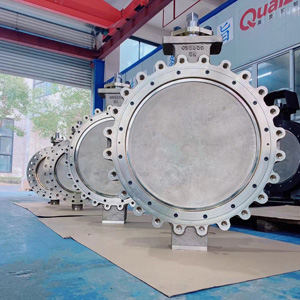
Future Trends and Developments
As we move further into the 21st century, various future trends and developments are poised to reshape our world. One such trend is the increasing focus on sustainability and climate change. As businesses and governments alike recognize the importance of adopting more environmentally friendly practices, we can expect to see a surge in green technologies and sustainable business models. In the realm of mobility, electrified powertrains are becoming more prevalent as the automotive industry shifts away from fossil fuels. Another crucial area of development is autonomous production, where advancements in robotics and AI are automating manufacturing processes, increasing efficiency, and reducing human error. The data economy and digitalization are also key future trends. With the proliferation of IoT devices and the increasing use of big data analytics, businesses are leveraging data to drive decision-making, improve customer experiences, and create new revenue streams. Furthermore, technologies like AI, machine learning, and blockchain are transforming various sectors, from finance to healthcare to education. In the field of web development, trends like progressive web apps, AI chatbots, and single-page applications are changing the way we interact with the digital world. These trends and developments, among others, are shaping our future, creating new opportunities, and posing new challenges that we must be ready to navigate.
Discussion on upcoming technological advancements in valve design.
The field of valve design is on the cusp of significant technological advancements. One of the primary trends is the increasing adoption of smart valves, which leverage Internet of Things (IoT) technology to enhance functionality and efficiency. These valves can monitor their own performance, predict maintenance needs, and even adjust operations in real-time, reducing downtime and improving overall system performance. There’s also a growing demand for automatic valves that can operate independently without the need for manual intervention, increasing operational efficiency and safety. Advancements in materials science are leading to the development of more durable and efficient valves, capable of withstanding harsher conditions and performing optimally over longer periods. The integration of robotics in valve manufacturing is another key trend, which is expected to revolutionize production processes, improve precision, and reduce costs. Lastly, the use of simulation and modeling software in valve design is gaining momentum, allowing engineers to test and optimize designs virtually before moving to production. These upcoming advancements are set to push the limits of performance in valve design and reshape the industry in the years to come.
Predictions on how these advancements could impact future water treatment and desalination processes.
Technological advancements in valve design have the potential to dramatically impact future water treatment and desalination processes. The advent of smart valves, with their ability to monitor performance and adapt in real-time, could significantly increase system efficiency. They can predict maintenance needs, reducing downtime and ensuring consistent water quality. This could be particularly impactful in desalination processes, where maintaining optimal pressure and flow rates is crucial for efficient operation. Automatic valves, capable of operating independently, could further enhance operational efficiency and safety, minimizing human intervention and potential errors. Advancements in material science could lead to the development of more durable valves, able to withstand the harsh conditions often found in desalination plants, leading to longer lifespan and reduced maintenance needs. The integration of robotics in valve manufacturing could improve precision, leading to more accurate flow control and improved water quality. Lastly, the use of simulation and modeling software allows for better optimization of valve designs, potentially leading to more efficient and effective water treatment and desalination processes. These advancements, while still emerging, hold the promise of revolutionizing these critical water processes in the near future.
Conclusion
In conclusion, the role of wafer lug type electric butterfly valve in water treatment and desalination plants cannot be overstated. Their robust design, high functionality, and the ability to withstand harsh conditions make them an integral component in these settings. They are vital for maintaining optimal fluid flow rates, ensuring the integrity of the process, and reducing potential downtime, all of which contribute to the overall operational efficiency of these plants.
Real-world examples like the Carlsbad Desalination Plant and the Stickney Water Reclamation Plant highlight the effectiveness of these valves in managing complex water treatment and desalination processes. The fact that such large-scale, technologically advanced facilities rely on these valves underscores their importance in this field.
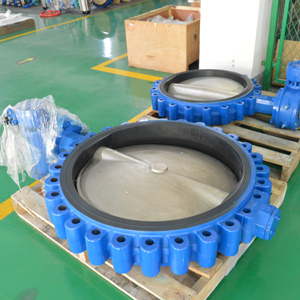
Looking ahead, the future of valve design is promising, with several technological advancements on the horizon. From smart control valves that can monitor and adjust their own performance, to automatic valves that operate independently, the potential for increased efficiency and precision is immense. New developments in material science could lead to more durable valves, capable of withstanding even harsher conditions and performing optimally over longer periods. And with the integration of robotics and simulation software into valve manufacturing, we can expect even greater precision and cost-effectiveness in the future.
These advancements could have significant implications for water treatment and desalination processes. Enhanced system efficiency, reduced downtime, improved water quality, and greater operational safety are just a few of the potential benefits. While these technologies are still emerging, their potential impact is exciting, and it will be interesting to see how they shape the future of water treatment and desalination.
In the end, it’s clear that wafer lug type butterfly valves play a key role in water treatment and desalination plants. As we continue to face global water challenges, their importance will only grow. Whether it’s through current applications or future advancements, these valves will remain at the forefront of our efforts to manage and preserve our most precious resource – water.



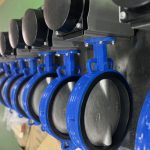
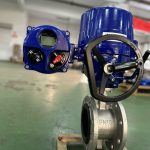
-150x150.jpg)
